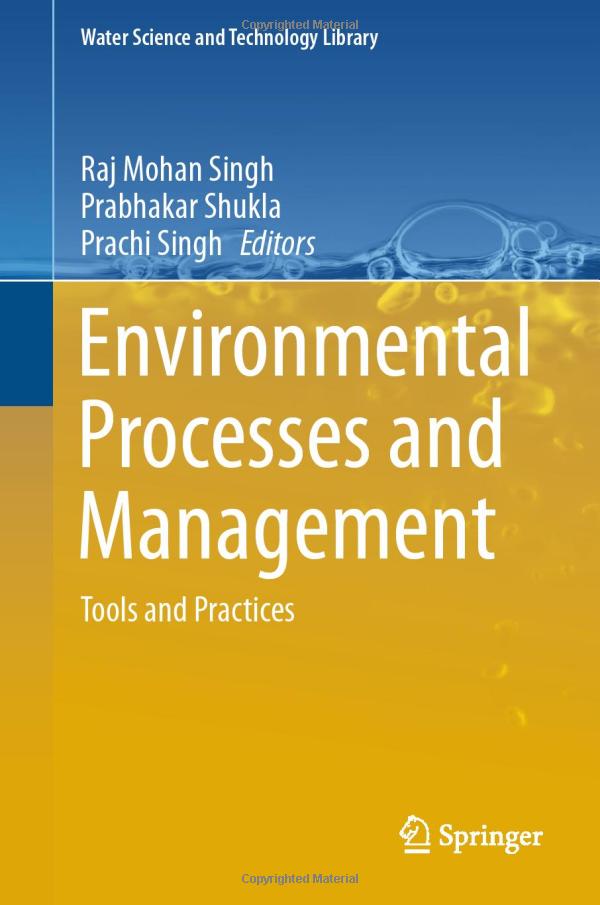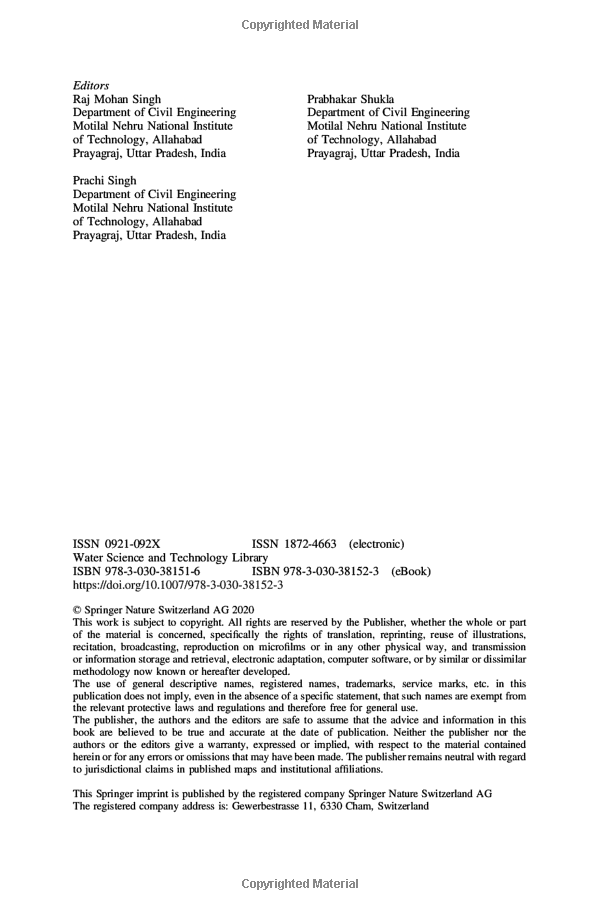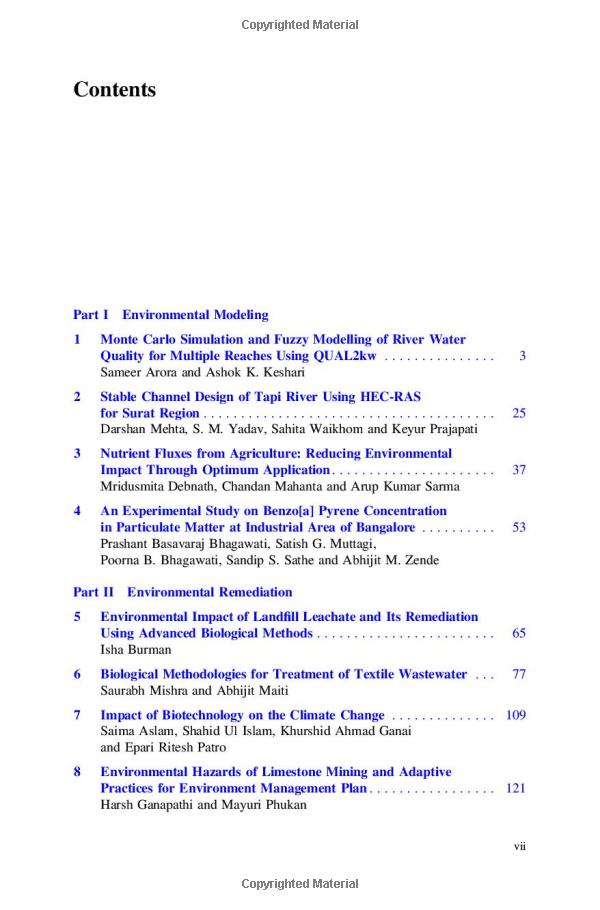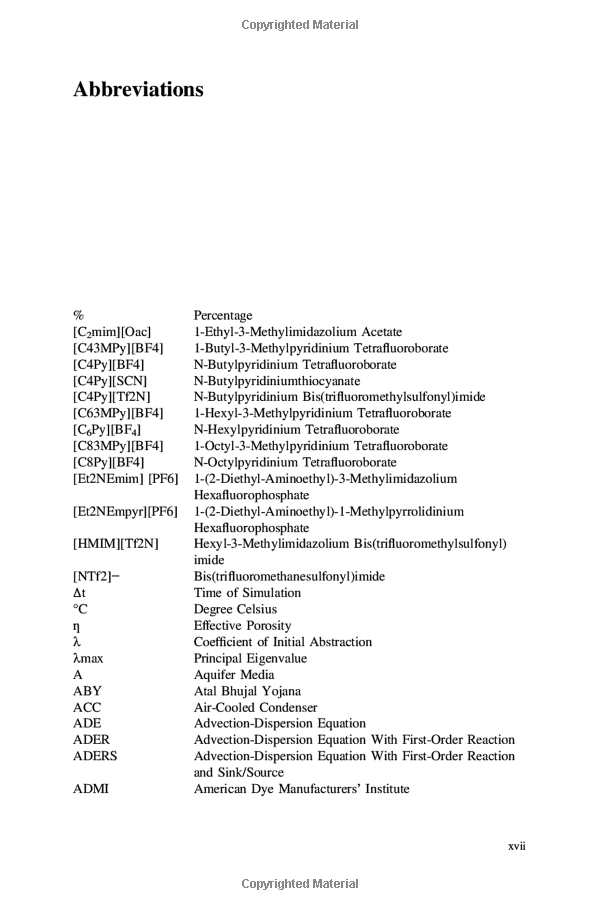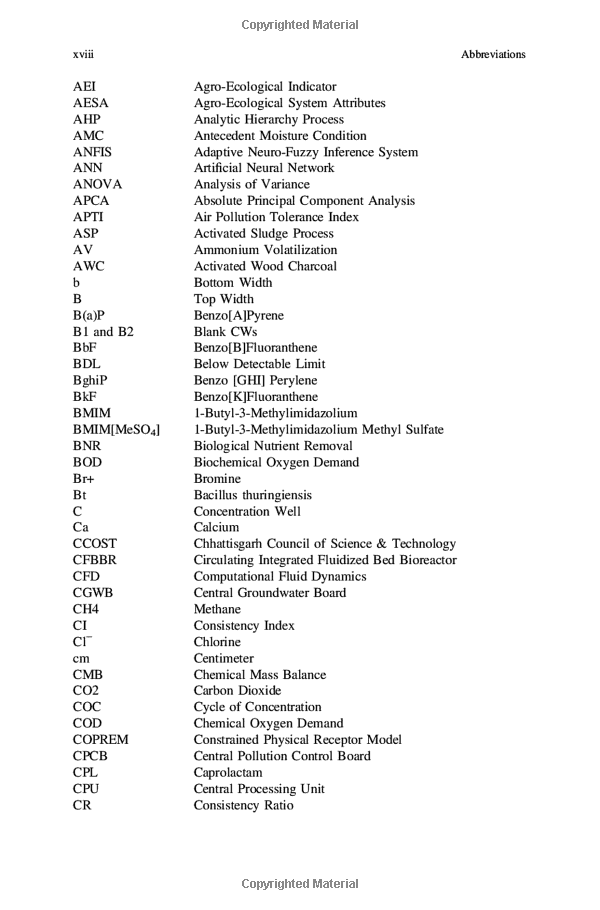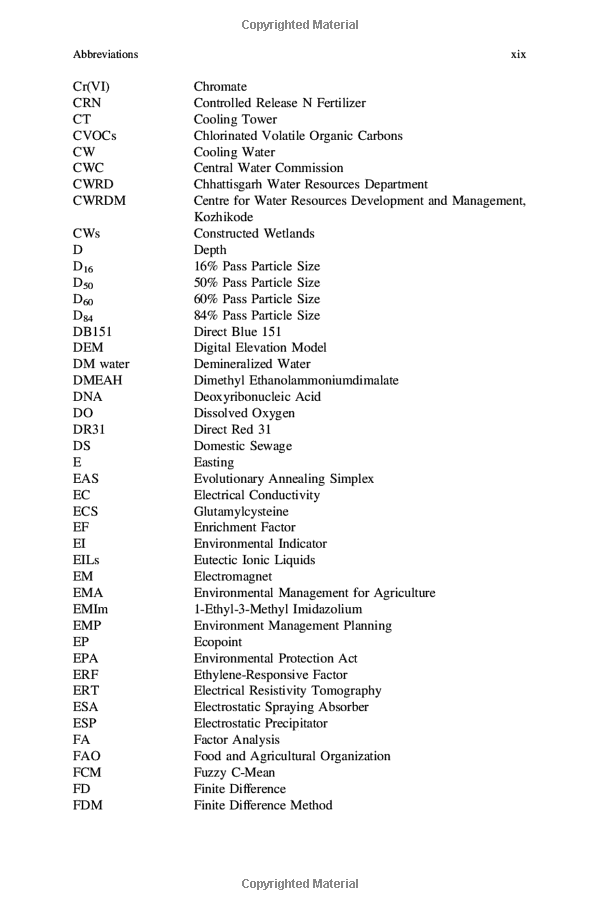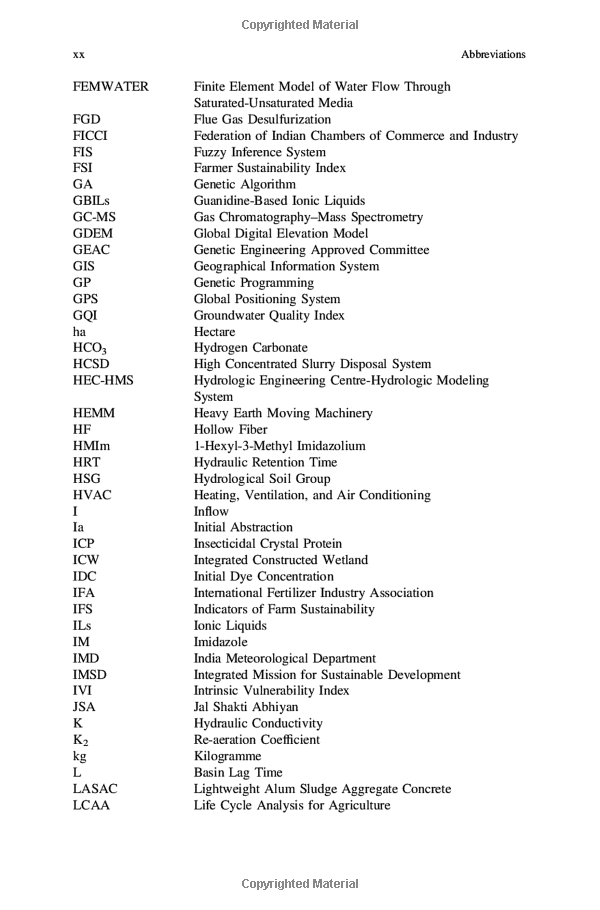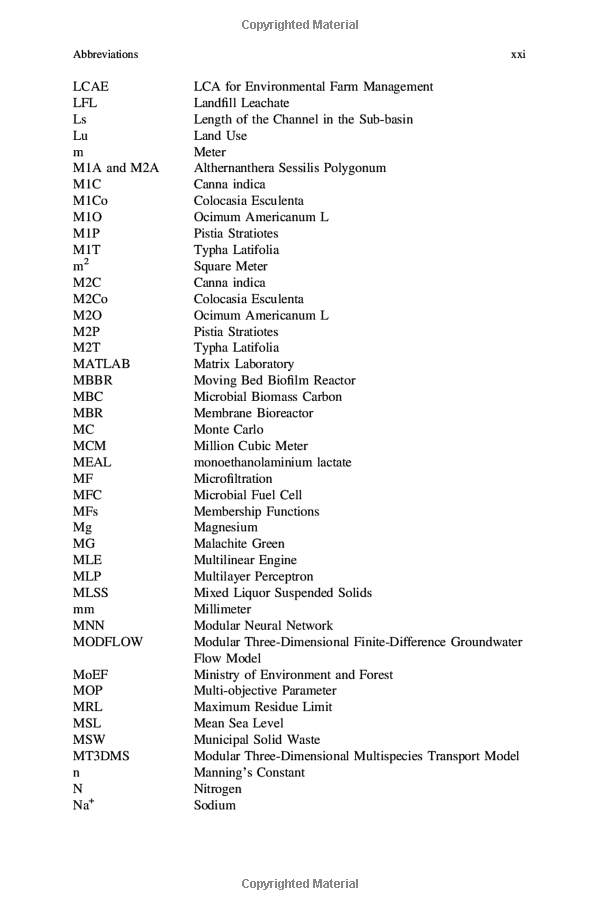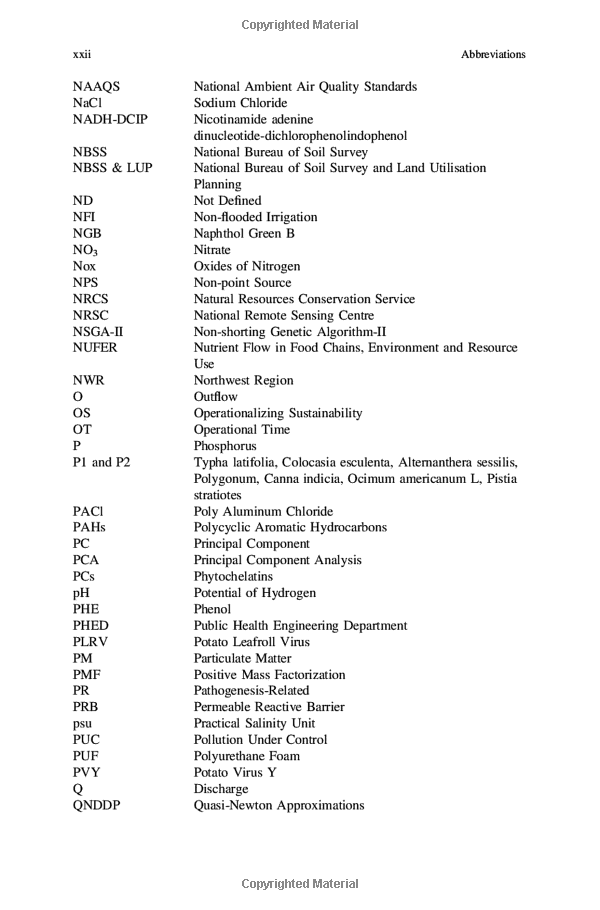图书简介
This book presents an in-depth, science-based approach to applying key project-management and spatial tools and practices in environmental projects. Providing important data for those considering projects that balance social-economic growth against minimizing its ill-effects on planet Earth, the book discusses various aspects of environmental engineering, as well as formula and analytical approaches required for more informed decision-making. Beginning with a broad overview of the factors and features of environmental processes and management, the book then clearly details the general application of fundamental processes, the characteristics of the different systems in which they occur, and the way in which these factors influence process dynamics, environmental systems, and their possible remedies. While primarily intended for professionals responsible for the management of environmental projects or interested in improving the overall efficiency of such projects, it is also useful for managers in the private, public, and not-for-profit sectors. Further, it is a valuable resource for students at both undergraduate and postgraduate levels, and an indispensable guide for anyone wanting to develop their skills in modern environmental management and related techniques.
1.HYDRO peaking in nordic rivers/ hydropeaking combined analysis of climate change and energy market.- 2.Annual Variability of Per Capita Renewable Water Resources: Long Term Water Planning Using SWAT Model in the Athi Catchment, Kenya.- 3.Monte Carlo simulation and fuzzy modelling of river water quality for multiple reaches using QUAL2Kw.- 4.Design of Stable Channel Using HEC-RAS: A Case Study of Tapi River, Surat City.- 5.Nutrient fluxes from agriculture: reducing environmental impact through optimum application.- 6.Air Quality Monitoring with Special Reference to Respirable Suspended Particulate Matter in an Industrial Area.- 7.The water-energy nexus prespective of hydropower in the context of climate Change.- 8.Biological methodologies for treatment of textile wastewater.- 9.Role of microbes in Environmental Biotechnology and its role in the environment.- 10.Environmental Hazards of Limestone Mining and Review of Adaptive Practices for Environment Management Planning.- 11.Water Optimisation in Thermal Power Plants.- 12.Geoengineering Structures of Crabs and Their Role in Nutrient Cycling in Mangrove Ecosystem of Mahanadi Delta of Odisha, India.- 13.Design Considerations of Sustainable Pervious Concrete Block Pavement.- 14.Analysis of Historical Records of Climate Change and the Calamitous Events in Kasmir Valley.- 15.Possible Remediation of Perils of Water Eminence and Extent.- 16.Optimization methodologies in complex water supply systems for energy saving and a correct management under uncertainty.- 17.Application of a low-cost technology to treat domestic sewage and to improve fertility of a barren lateritic soil.- 18.Parametric evaluation of water quality characteristics varying downstream from Shimla to Solan in Himachal Pradesh region, India.- 19.Partial replacement of fine aggregates with defluoridation sludge in cement mortars manufacturing: A critical review.- 20.Genetically Modified Crops and its impact on Environment.- 21.Degradation of Gemfibrozil (lipid regulating drug) by using Advanced Oxidation and Biological Processes: A Review.- 22.Source Apportionment of particulate matter - A Critical Review for Indian Scenario.- 23.A review on Ionic liquids as novel adsorbents for SO2 removal.- 24.Garden-Landscape Practices in Mughal Kashmir: Design, Planning and Management.- 25.Long Term Performance Evaluation of Permeable Reactive Barrier for Groundwater Remediation using Visual MODFLOW.- 26.Use of Electrical Resistivity Tomography for Detection and Delineation of Groundwater Contamination near a Non-engineered Solid Waste Landfill.- 27.Saltwater intrusion in coastal aquifers: A case of environmental management.- 28.Assessment of groundwater quality around Coal mining regions of Korba district, Chhattisgarh, Central India.- 29.Numerical errors associated with groundwater models and improving the reliability of models in environmental management issues.- 30.Staus of Groundwater Salinity in North West Region of India.-31.Irrigation Water Management under Changing Climate.- 32.Particle Swarm Optimization for identification of unknown groundwater pollution source.- 33.Fluoride Contamination and Abatement Measures: A Geoenvironmental Perspective.- 34. Interaction between Groundwater and surface water and its effect on groundwater quality.- 35.Assessment of an Intrinsic and a Specific vulnerability to identify Groundwater vulnerable zones of Nagpur city, India.- 36.Sustainable water management solutions.- Conclusions
Trade Policy 买家须知
- 关于产品:
- ● 正版保障:本网站隶属于中国国际图书贸易集团公司,确保所有图书都是100%正版。
- ● 环保纸张:进口图书大多使用的都是环保轻型张,颜色偏黄,重量比较轻。
- ● 毛边版:即书翻页的地方,故意做成了参差不齐的样子,一般为精装版,更具收藏价值。
关于退换货:- 由于预订产品的特殊性,采购订单正式发订后,买方不得无故取消全部或部分产品的订购。
- 由于进口图书的特殊性,发生以下情况的,请直接拒收货物,由快递返回:
- ● 外包装破损/发错货/少发货/图书外观破损/图书配件不全(例如:光盘等)
并请在工作日通过电话400-008-1110联系我们。
- 签收后,如发生以下情况,请在签收后的5个工作日内联系客服办理退换货:
- ● 缺页/错页/错印/脱线
关于发货时间:- 一般情况下:
- ●【现货】 下单后48小时内由北京(库房)发出快递。
- ●【预订】【预售】下单后国外发货,到货时间预计5-8周左右,店铺默认中通快递,如需顺丰快递邮费到付。
- ● 需要开具发票的客户,发货时间可能在上述基础上再延后1-2个工作日(紧急发票需求,请联系010-68433105/3213);
- ● 如遇其他特殊原因,对发货时间有影响的,我们会第一时间在网站公告,敬请留意。
关于到货时间:- 由于进口图书入境入库后,都是委托第三方快递发货,所以我们只能保证在规定时间内发出,但无法为您保证确切的到货时间。
- ● 主要城市一般2-4天
- ● 偏远地区一般4-7天
关于接听咨询电话的时间:- 010-68433105/3213正常接听咨询电话的时间为:周一至周五上午8:30~下午5:00,周六、日及法定节假日休息,将无法接听来电,敬请谅解。
- 其它时间您也可以通过邮件联系我们:customer@readgo.cn,工作日会优先处理。
关于快递:- ● 已付款订单:主要由中通、宅急送负责派送,订单进度查询请拨打010-68433105/3213。
本书暂无推荐
本书暂无推荐












